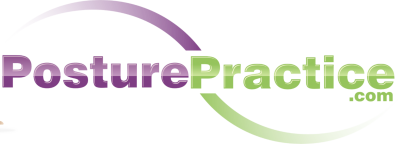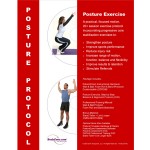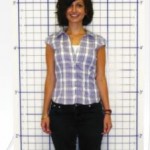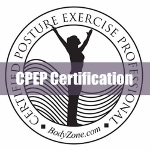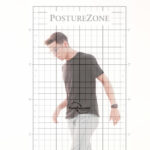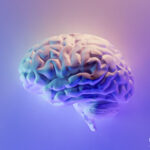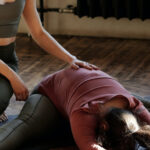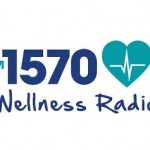Motor Learning in Kids vs Adults – Part II
Motor Learning in Children Compared to Adults – Part II
*Did you miss Part I? Read it here >>>
From Movement to StrongPosture®
Effective motion is efficient and smooth, or as dancers describe it – graceful. In biomechanics, this smooth linkage of complex motion means nerve pathways are being activated and inhibited in sequence to create what’s called coupled motion.
What’s taken for granted for dancers and just about all humans in everyday life is that we’re also unconsciously doing something very complex: Keeping our balance… on only two feet!
This is significant because every other mammal on the planet uses four feet (or paws) to get around and perform in everyday life.
Why is this important? From a kinetic energy perspective bipedal humans are more efficient. We can’t run a fast as our cousins on 4 legs, but we can keep going for far longer (which is how our ancestors ran down creatures like wooly mammoths and saber tooth tigers).
Balanced Thinking?
In addition, as the only primates that live our lives balancing on two feet, we humans have more neurons available and so a greater neurologic potential to train motion control. It also helps with other cognitive activities, like abstract thinking, communicating a story, and choosing what to focus upon.
When learning a new task, the neurologic weighting of our 3 sensory inputs: Visual, Vestibular and Proprioceptive. This is a strong factor in how we manage subtleties of balance and alignment intrinsic in our overall gross motions (that’s the BAM in StrongPosture®).
Balance: Adults vs Children
In “Static Body Balance in Children and Expert Adults Ballroom Dancers: Insights from Spectral Analysis of Shifts”1 Antonio Cicchella described significant difference in how young vs older dancers learn balance exercises.
For adults, Cicchella found a “dominance of the vestibular system” in the static equilibrium tests and so recommended focused attention on proprioception during balance exercises with eyes closed.
For children, he recommended focusing attention on vision by doing balance exercises with eyes open.
From my perspective observing posture and motion, I have two observations to add…
The first is that unique functional compensation patterns develop from the individual’s structural adaptations over a lifetime. This is relevant for all adults, but especially for professional dancers.
As injuries accumulate over time, and loss of the degrees of freedom of subtle arcs of motion ripple up (and down, and across) the kinetic chain(s), our perception and unthinking movement throughout life veers away from symmetry and accuracy. Which is why for adults, especially those not yet experiencing balance issues, rebalancing those intrinsic errors towards reality by doing balance exercise with eyes closed is a smart strategy to age well.
The second is that the children here are trained dancers, and so atypical. But from humanity’s long-term perspective, all kids today are unique because today’s tech kids spend massive amounts of hours in front of a screen, hands on a device and so engaged in less varied motion patterns. Plus, many, many are grossly sedentary.
Training Balance – Eyes Open, Eyes Closed
 Cicchella’s recommendation that dance teachers and coaches “train children in balance exercises with their eyes open, while adults could train with their eyes closed” is not a bad thing, but does not address the fact that the NMS system of today’s tech kids is developing and so being trained differently than any prior generation. That said, the population of trained young dancers in the study are obviously not average kids.
Cicchella’s recommendation that dance teachers and coaches “train children in balance exercises with their eyes open, while adults could train with their eyes closed” is not a bad thing, but does not address the fact that the NMS system of today’s tech kids is developing and so being trained differently than any prior generation. That said, the population of trained young dancers in the study are obviously not average kids.
I agree with Cicchella’s recommendation for adults to close eyes for balance exercises, but would opine that correlating eyes open with eyes closed exercises is the better strategy for all dancers to add to their routines.
An important point especially for dancers: Posture is where all motion begins, but there’s more to any performance than posture. CPEP, Kelli Dorrough, trains dancers, and made a really good point for why she advises adult professionals to use eyes closed training: “When you’re performing on stage you need to feel motion more, because sometimes you’re blinded by the bright lights”.
Finding and strengthening weak links with posture correction exercise
For dancers and adults of all ages who want to move well and avoid injury, the best strategy is regularly performing balance exercise, sometimes with eyes open, and sometimes with eyes closed. And, doing so with a cognitive focus on aligning proprioception and vestibular inputs.
Feeling how your body is balancing. Reinforcing our two internal somatic inputs to provide a more accurate base to correlate with our visual input of the outside environment.
Strong Posture Program – Connect Perception to Reality
The StrongPosture® protocols call the process of training vestibular, visual and somatosensory inputs P2R. It’s about connecting our internal somatic Perception to external Reality (P2R), and so training the CNS towards being more accurate.
Moving the big parts of the body requires rearranging the small things as well. For dancers and the rest of us who want to perform at our best and stay in motion as we age, it’s about connecting subtle movements with large ones to move energy up and down the kinetic chain smoothly. Connecting core controlled motion so things are more fluid, and less choppy.
In other words, moving well.
—
*Certified Posture Exercise Professional
1 Cicchella, A. (2021). Static Body Balance in Children and Expert Adults Ballroom Dancers: Insights from Spectral Analysis of Shifts. Biology (Basel), 10(12).
- At-home patient rehab. 7 Steps to StrongPosture® is the online at-home program for patients that integrates education and exercise designed to blend easily into your workflow. Subscribe to offer the program to your patients & clients >>>
- CE Approved online education. Posture and Balance Assessment, Rehabilitation & Motor Control Exercise >>>
- Complete in-office rehab program. Pro Training Manual, Patient Handouts and more >>>
Add the StrongPosture® program to your practice get the Posture Rehab Exercise Set and enroll in the online CE course. Take your practice to the next level with CPEP® Posture Specialist Certification.
